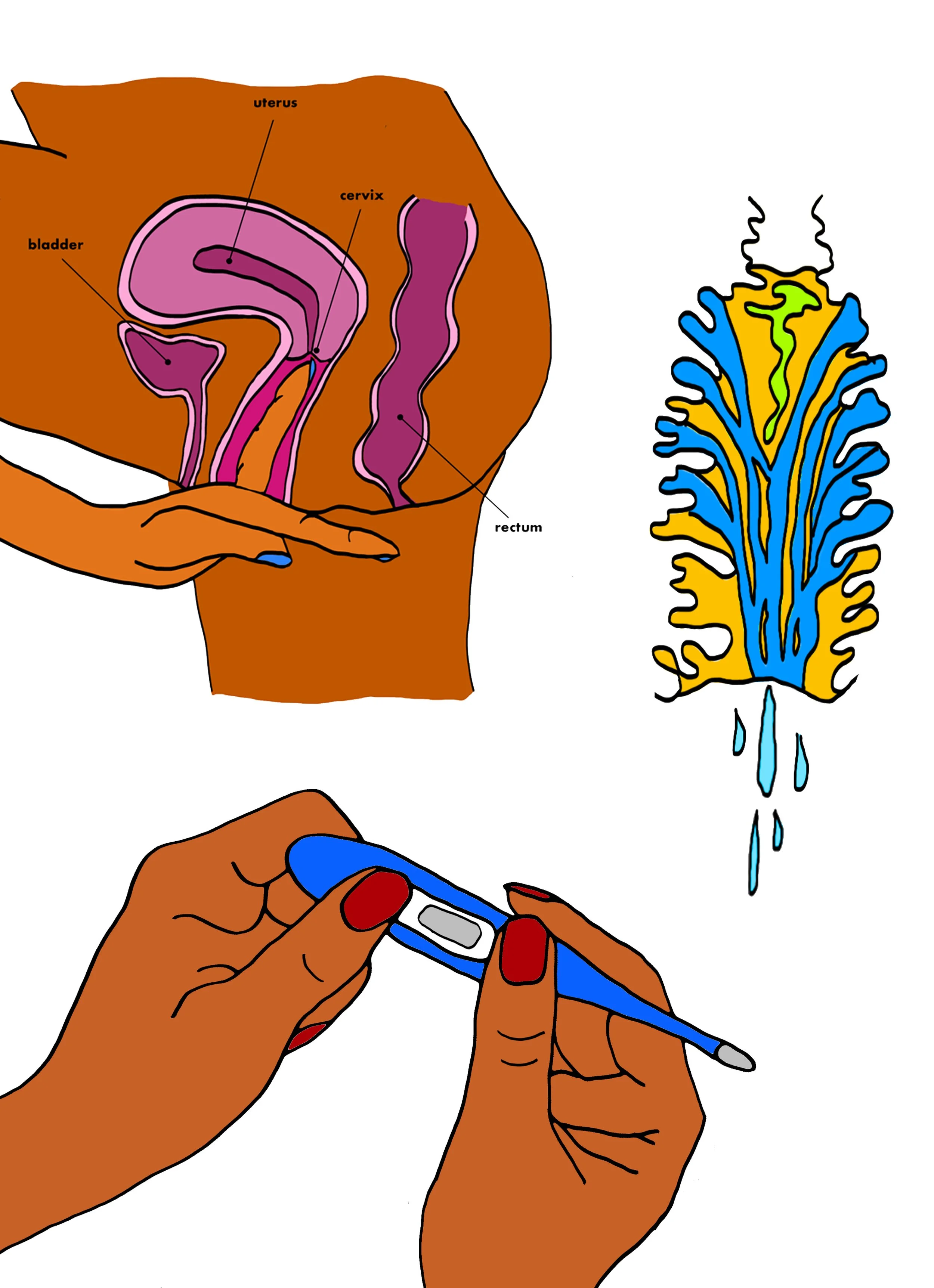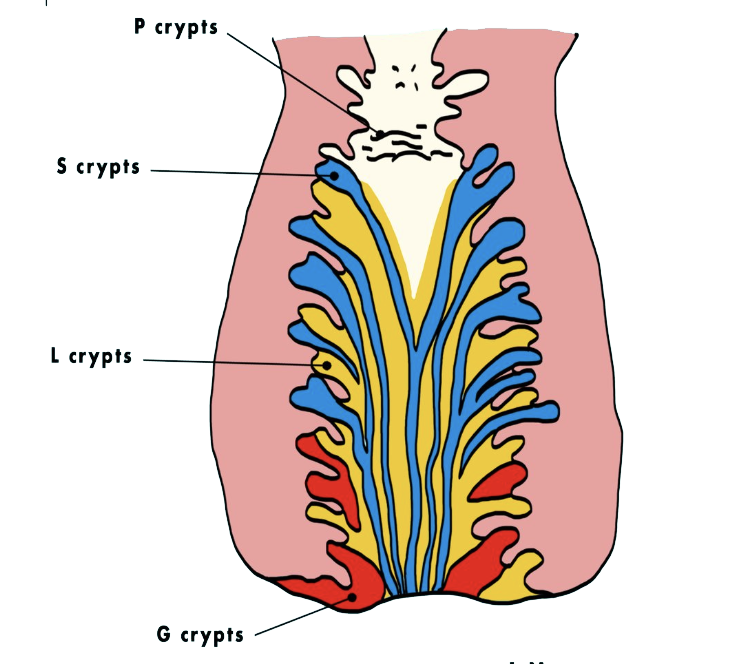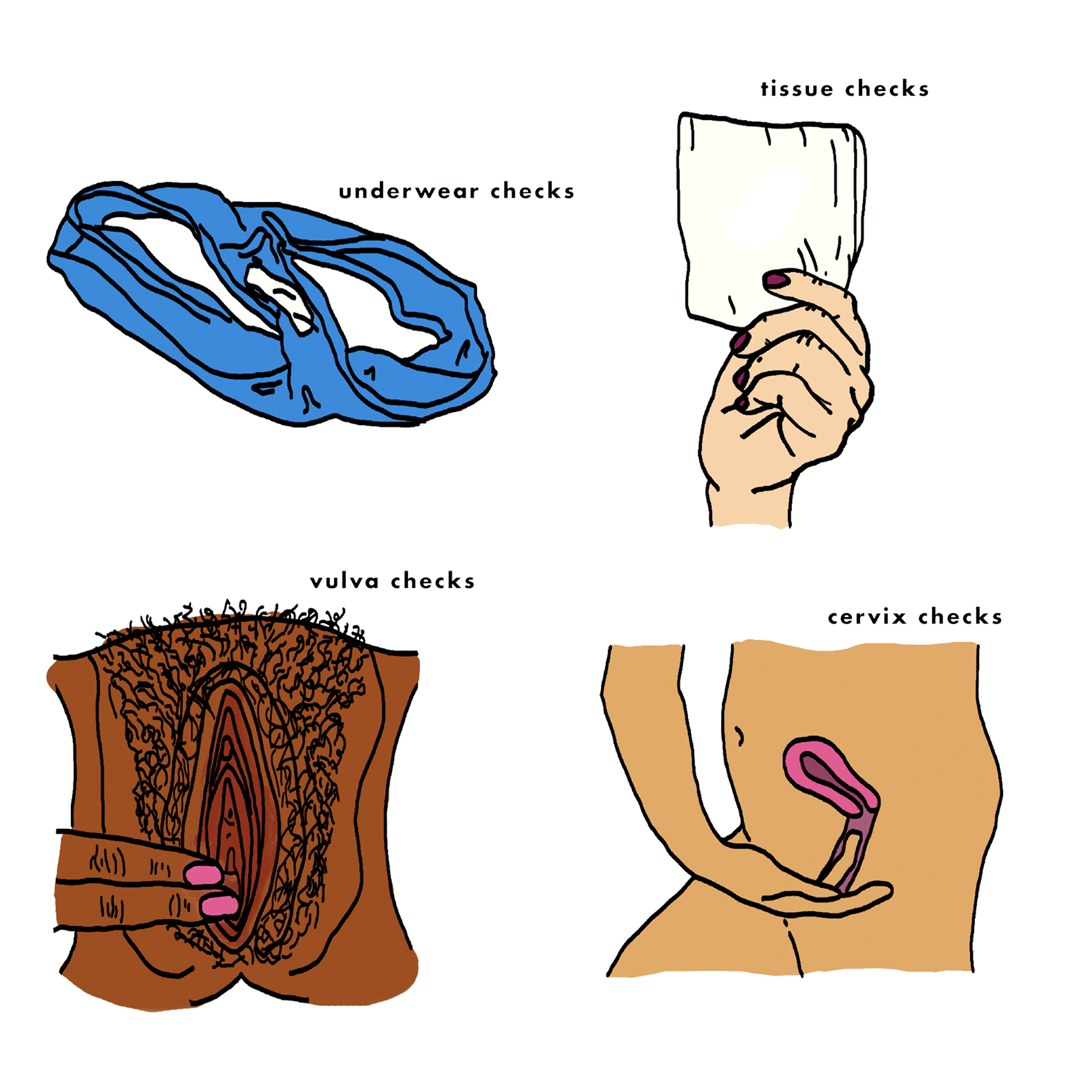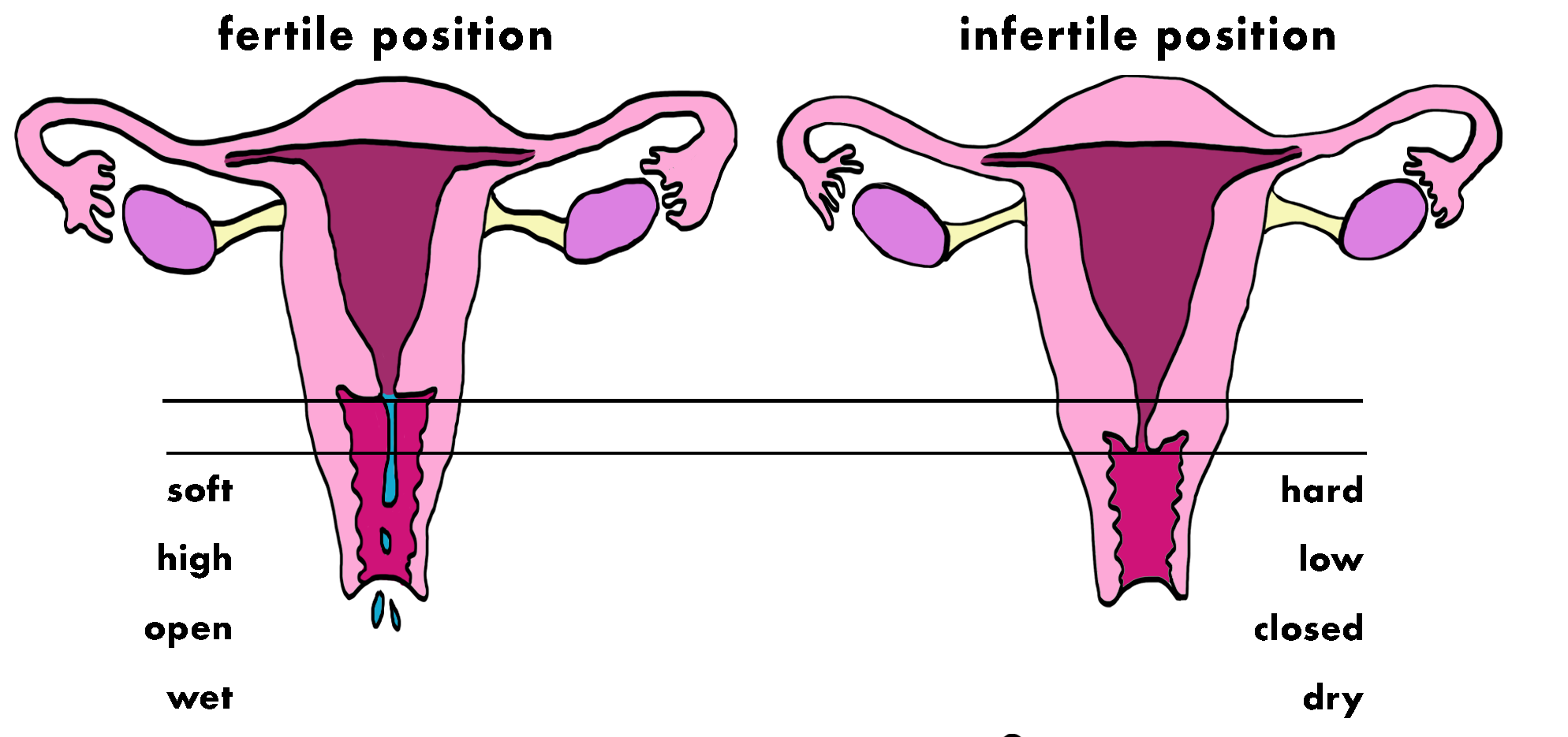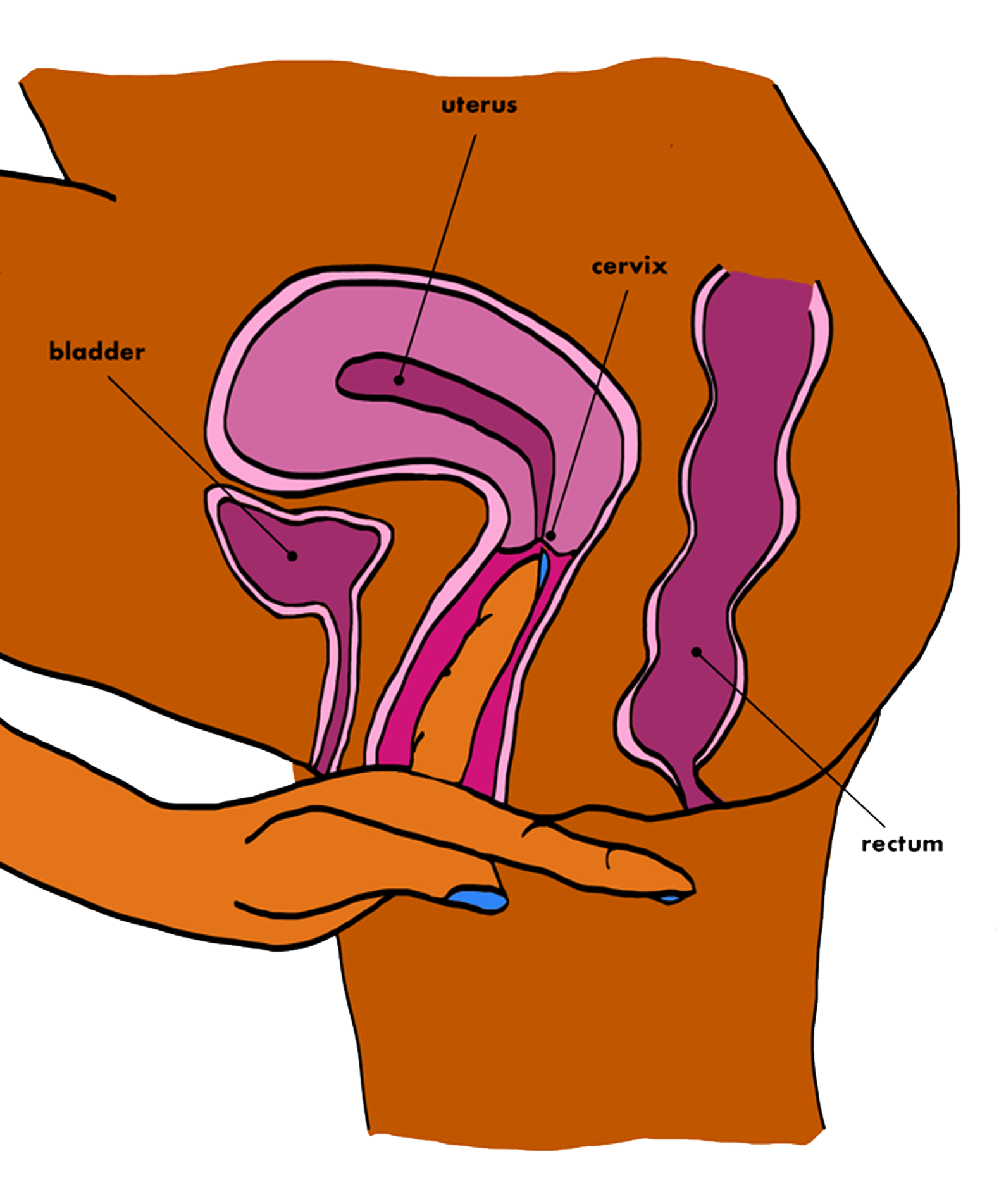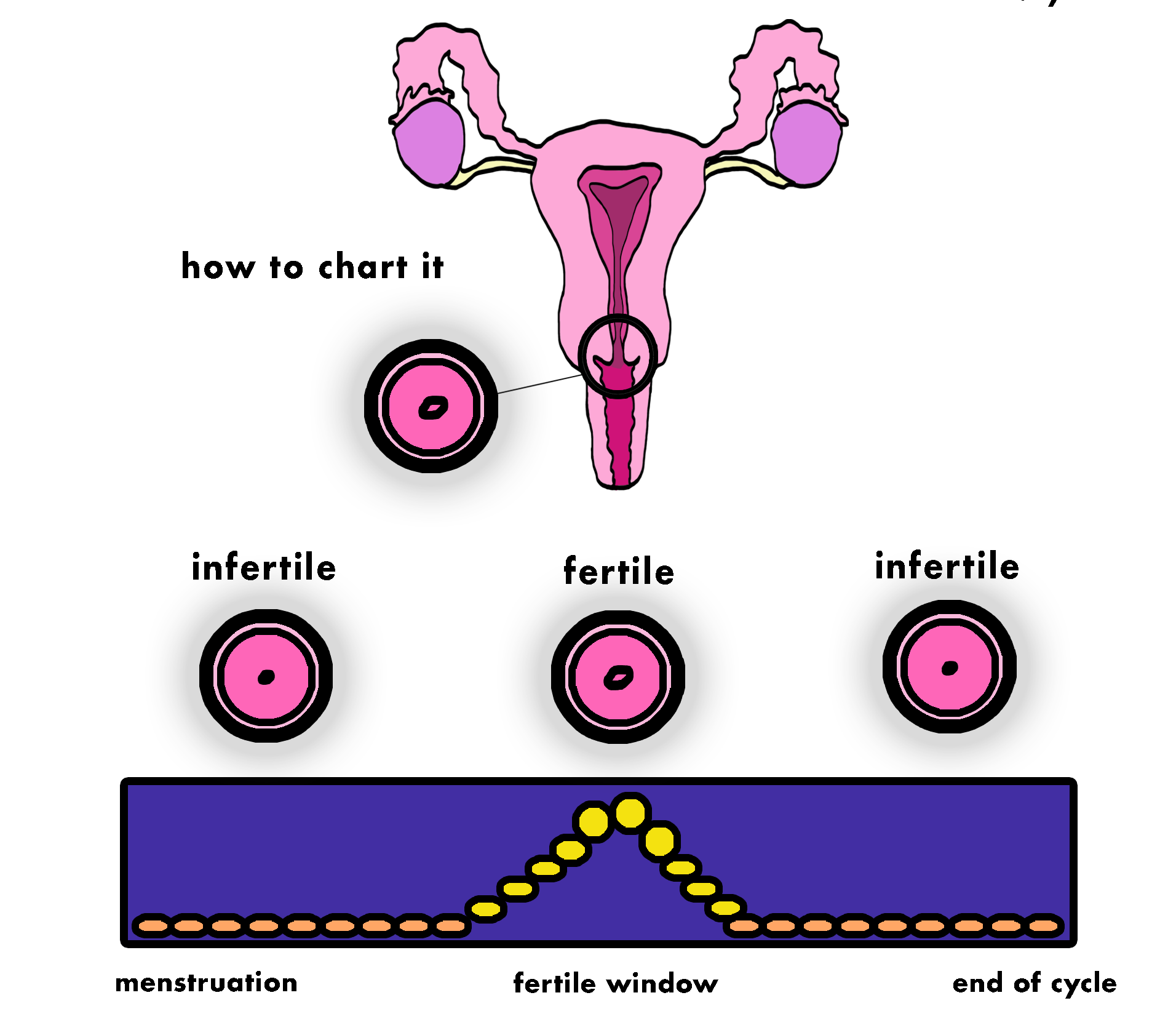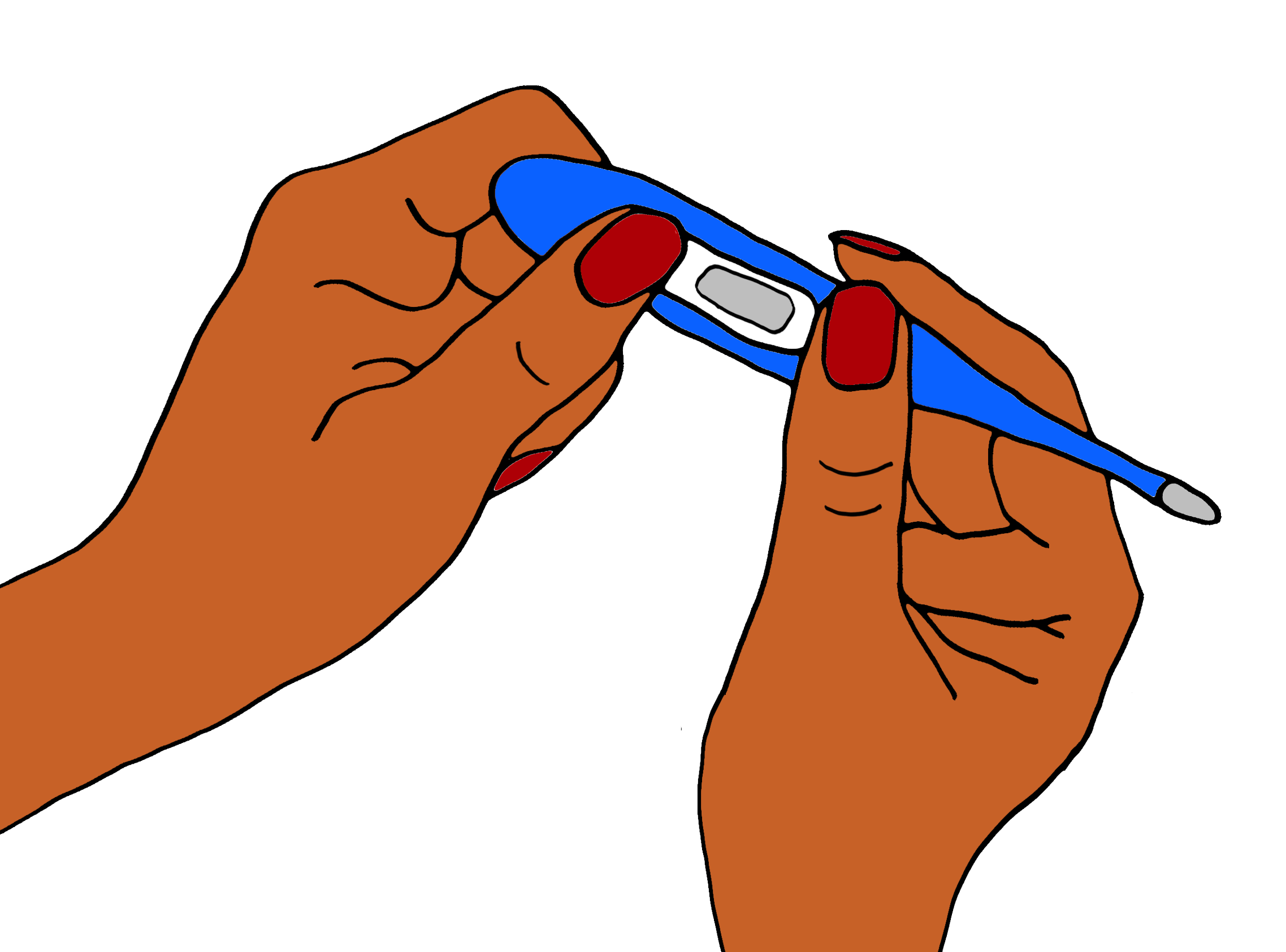The 3 Primary
Fertility Signs
cervical secretions
cervical position
basal body temperature
Cervical Secretions
During the menstrual cycle, the cervix responds to the fluctuating ovarian hormones estrogen and progesterone, causing your body to release different kinds of cervical secretions.
the cervix
Cervical fluid is our main diagnostic fertility sign. It tells us in the moment about our fertility status.
the fertile window
When estrogen production in the ovary increases during the follicular phase, the cervix’s mucus plug dissolves (red) and the cervix opens to produce cervical fluid (blue). Sensation changes at the vulva also occur, becoming more moist and slippery. This indicates the start of the fertile window and impending ovulation.
How We Observe It
Check for cervical secretions in multiple ways and multiple times per day.
Monitor cervical fluid changes passively throughout the day with underwear and toilet tissue checks when you use the bathroom. Not only can you use the method of observing what you see, you can also feel the slippery sensation when wiping.
Or choose more active forms of cervical fluid checks, a chance to stop and pay specific attention to your cervical secretions on that day.
It is important to chart as much information as possible for the day. Always mark down the most peak fluids you see for that day. For example, if you observe creamy and then egg-white fluid, you can mark a peak observation for that day.
You can also make notes about sensation and create your own fluid categories that help you understand your particular pattern within the general pattern of cervical fluid observations.
How We Chart It
Cervical secretions are charted on a bar graph
Dry observations are the lowest set of bars
Non peak fluids are the medium set of bars
Peak fluids are the highest set of bars
Ovulation is most likely to occur around the time of peak fluid production
The last day of fertile quality cervical fluid before the vulva returns to dry is called Peak Day.
Cervical Position
The cervix’s position changes during the menstrual cycle.
Fertile Window: The cervix becomes softer to the touch, rises higher in the vaginal canal, and opens to secrete fertile quality cervical fluid.
Infertile Phases: The cervix becomes harder to the touch, falls lower into the vaginal canal and thus becomes easier to reach with your fingers, it closes and becomes dry as it stops secreting cervical fluid.
Cervical position checks are a great way to explore your body and become more acquainted with the changes of the menstrual cycle. They are not required to perform the fertility awareness method, and there are a number of people who may not be comfortable touching their cervix or have pain when touching their vulva and vagina. This should be taken into consideration when discussing cervical position, even as we encourage people to feel their cervixes more.
How We Observe It
Cervical position is observed in fertility awareness by using the fingers to gently press on the cervix in the vaginal canal. First, wash hands thoroughly. The insert the longest finger(s) until you feel the cervix and cervical os (opening). The cervix will either feel soft, high, open, and wet, or low, hard, closed, and dry.
How We Chart It
Cervical position is charted in fertility awareness, by a series of ovals or other symbols that represent the changes to the height and texture of the cervix. It also shows that the cervical os (opening) physically dilates during the fertile phase as well.
Waking Body Temperature
The hormonal event of ovulation releases progesterone.
Progesterone is a thyroid stimulating hormone which raises your body temperature after ovulation.
We call this rise in temperature a thermal shift, and your temperature will remain high until the end of the cycle.
When a sustained thermal shift is observed, the fertile window ends.
Three consecutive days of higher temperatures confirms when it is safe to resume sex without the chance of pregnancy.
More than 18 days of high temperatures indicates a pregnancy.
How We Observe It
Waking body temperature is measured orally or vaginally upon waking, when you are still laying down in bed. Take your temperature around the same time each morning, after at least 4 hours of sleep. When you open your eyes, grab the thermometer and warm it in your mouth for a minute. Then press the button and wait for the beep and the reading.
How We Chart It
Waking body temperature is recorded on a line graph. Each day, the temperature reading becomes a dot on the graph. Ovulatory cycles create biphasic temperature patterns, where the pre-ovulatory temperatures are low, and the post ovulatory temperatures are high, creating two distinct phases that can be separated by drawing a coverline.
<< Return to getting started
Next to types of FAMs >>

